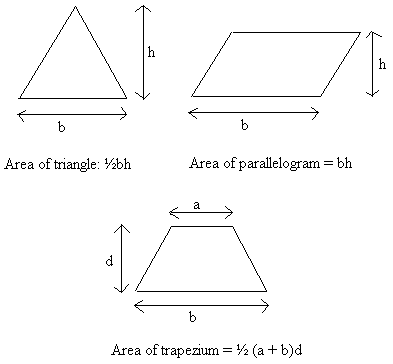Volume
A prism is a shape with a constant cross section, in other words the cross-section looks the same anywhere along the length of the solid (examples: cylinder, cuboid).
The volume of a prism = the area of the cross-section × the length. So, for example, the volume of a cylinder![]()
area of a triangle = half * base * height so the volume of a triangular prism is half*base*height*length
area of a circle
 (
( is the radius of the circle) so volume
is the radius of the circle) so volume
area of a parallelogram = base × height so volume =base*height*length as for a rectangle
area of a trapezium = half × (sum of the parallel sides) × the distance between them [
 ] so volume of a trapezoidal prism is
] so volume of a trapezoidal prism is


There are some shapes that must have their own formula for volume since cross section of a sphere for example, doesn't make much sense.
Sphere: Volume:

Pyramid: Volume = 1/3 × area of base × perpendicular height ( for a cone).
for a cone).